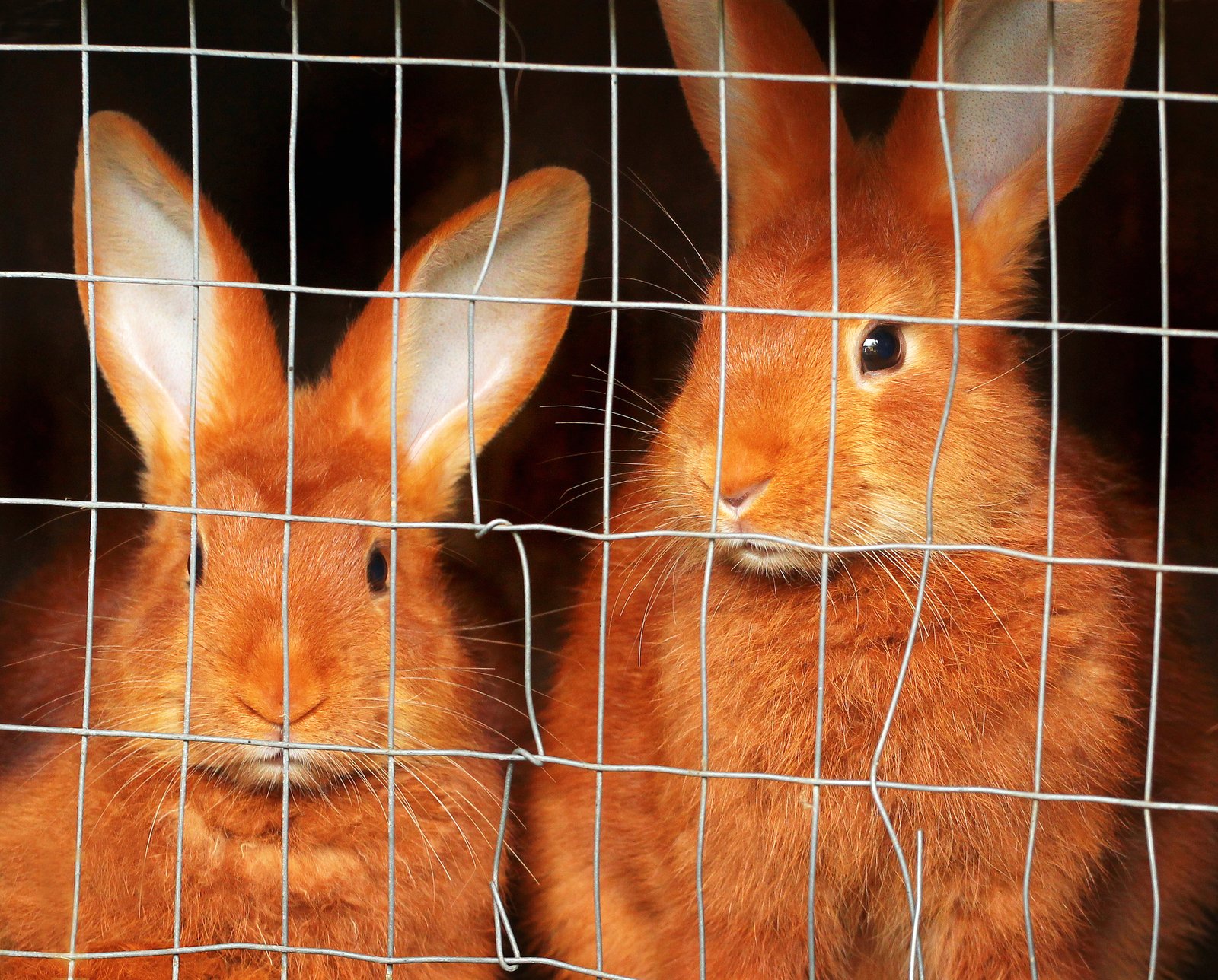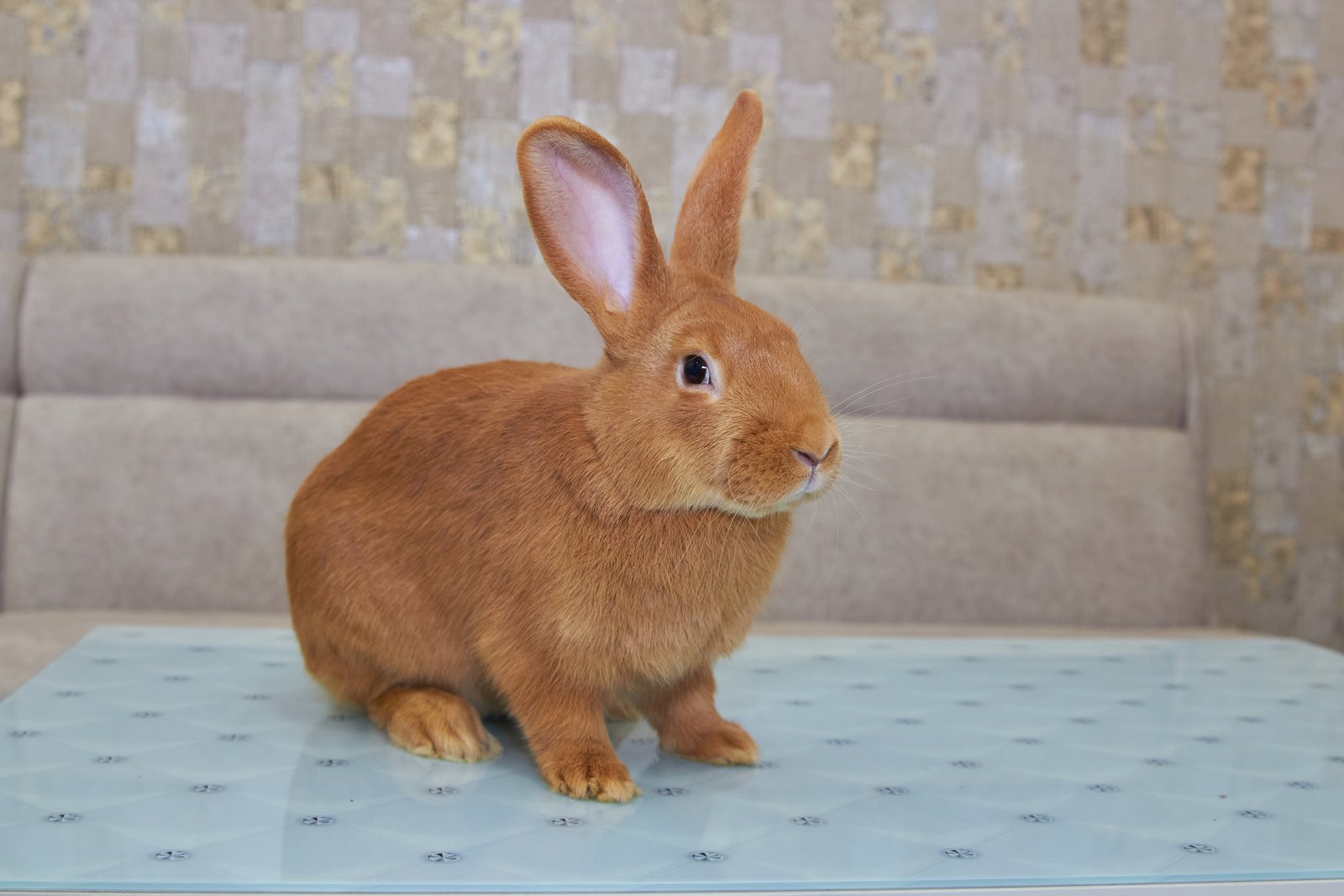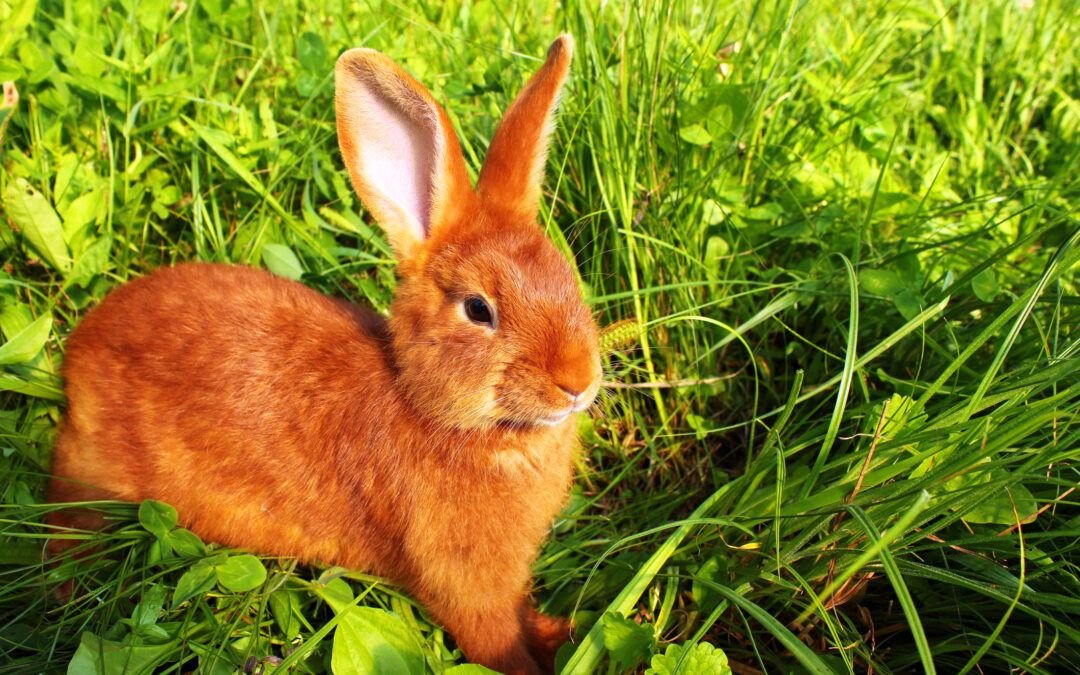A New Zealand rabbit breed is popular in the United States and other countries. It does not only produce good meat, but it can also be a great companion. As a docile and gentle pet, many owners enjoy this breed’s loyalty and comfort. Are New Zealand rabbits suitable for you? Do you want to know what the different New Zealand rabbit colors are? Let’s take a look!

Facts about New Zealand Rabbit Breed
| Body Size | Medium to large |
| Body Weight | 10 lbs to 12 lbs |
| Body Type | Commercial |
| Colors | White, red, black, blue, and broken |
| Lifespan | 5 to 8 years |
| Rarity | Common |
| Similar Breeds | Belgian Hare, Flemish Giant |
| Best Suited for | Couples with younger or older children, new rabbit owners, singles, seniors |
| Origin | California |
Background and History
Because of its name, you may have thought that the breed originated in New Zealand. But on the contrary, it was the first American rabbit developed. Breeders wanted to create bunnies that could be raised for their meat and be made as pets. It resulted in a California breeding experiment, leading to New Zealand rabbits’ development.
Many believed that the New Zealand rabbit breed was the product of the Golden Fawn and Belgian Hares. But others argued that it was due to crossing the genes between Flemish Giants and Belgian Hares. Anyhow, it gained popularity under the name New Zealand Red Rabbit in 1913.
Due to its meat and appearance, the breed became popular in the United States. It was in 1916 that the US rabbit standard was added. By this time, the New Zealand rabbits were only in red colors. But Willian S. Preshaw developed the white variety in 1917. The pure white coat complemented the bunny’s purple eyes. Hence, it became more popular than the red varieties.
After World War II, breeders started exporting New Zealand breeds to Britain. The black variety was developed in 1958 in Britain, while the blue appeared in 2016. However, they are less popular than the white variety. ARBA accepted five New Zealand rabbit colors, including the broken variety.
Features of the New Zealand Rabbit Breed
The New Zealand rabbit breed has unique features and appearance. The bucks can grow between 9 lbs to 11 lbs, while the does can grow between 10 lbs to 12 lbs. Moreover, bunnies reach their full size in 9 to 10 months, having a fast growth rate compared to other breeds. Senior bucks should be eight months of age and between 9 lbs to 11 lbs, with 10 lbs as the ideal weight. Senior does should be between 10 lbs and 11 lbs. Junior bucks and does must be between the ages of six to eight months. They should be at least 6 lbs but will not exceed 9 lbs.
Raised for their meat, New Zealand rabbits have deep bodies and well-rounded thighs. Their midsections are firm, broad, and meat, while their loins are well-filled. They also have well-developed shoulders that have equal width and length. You will also notice the females have dewlaps.
In addition, these rabbits have full heads with rounded faces and cheeks. They also have slight curves between their eyes and noses. Their ears are medium-thick and well-furred that are erecting above their heads. The breed’s appearance shows balance and uniformity, exhibiting meat-producing qualities.

Varieties of New Zealand Rabbit Breed
When it comes to the rabbits’ coats, they have medium-length, flyback fur. As of now, ARBA acknowledges five New Zealand rabbit colors. They are red, white, black, broken, and blue varieties. However, there can be other color variations as products of crossbreeding. They are the gold-tipped steel and chestnut agouti.
A red New Zealand rabbit breed has a bright reddish brown coat and brown eyes. The red color usually goes down deep to the hair shaft. New Zealand rabbits in mahogany red, fawn, or light brassy are disqualified from shows. Meanwhile, white varieties should have pure white coats and bright pink eyes. Those that have soiled or stained coats are considered as faults.
Meanwhile, black varieties have a uniform jet-black coat and a dark slate blue under color. You will also notice their dark brown eyes. However, those with stray white hairs and brownish cast are considered faults. Rabbits with excessive white hair and shadow bars on their feet are disqualified.
The broken varieties should have colors on both of their ears, on their noses, and around their eyes. Patterns are also present over their back, hips, and sides. Those with imbalanced markings are faulty. On the other hand, New Zealand bunnies with no colors on their noses are disqualified.

Temperament and Behavior
If you are looking for a great companion, you should include a New Zealand rabbit breed in your list! Like most large rabbit breeds, this bunny is known for its calm and docile behavior. It is also highly laid back that you don’t have to overextend yourself to win its trust and affection. Its friendly disposition helps it to get along with all kinds of owners.
Naturally affectionate, young and old kids love caring for New Zealand rabbits. They are breeds that rarely bite and show aggressive behaviors toward their owners. As rabbits that are raised for their meat, they love being held. These bunnies also don’t have problems getting along with other household pets. In fact, they thrive from living with other rabbit companions.
These bunnies are intelligent. Thus, you can teach them different tricks. Some even called them ragdolls because they flop, falling like true ragdolls. They are also low maintenance, making them perfect pets for new rabbit owners. Seniors, singles, and families with children are suitable owners for these bunnies.
However, neglected New Zealand bunnies may become anxious, timid, and scared. They must be appropriately treated to grow confidently. Although they love being held, you must ensure that you pick them up and carry them properly. Rabbits that are mishandled may show aggressiveness to protect themselves.

Grooming New Zealand Rabbit Breed
The soft, flyback coat of a New Zealand rabbit breed is easy to groom and does not require special attention. You can brush its coat weekly to remove loose furs and prevent matted and tangled coats. But if your bunny is shedding, brush its coat several times weekly to prevent it from ingesting its furs.
Since long nails are uncomfortable for your bunny, you should cut them every six to eight weeks. If you don’t know how to trim its nails, you can ask a vet to show you how. You must also not cut the nails too short since the quick may bleed. It would be better to have a first-aid kit if you accidentally injure your pet while trimming its nails.
Furthermore, clean your bunny’s ears to avoid earwax build-up that may lead to ear infections. Before cleaning your bunny’s ears, ensure that your pet is calm to prevent it from getting hurt. Once your pet is prepared, inspect its ears and remove large debris or ear wax with blunt tweezers or a cotton swab. Remove the excess dirt by wiping your bunny’s ear with a damp cloth.
Lastly, you must check your bunny’s teeth regularly. Unlike cats and dogs, rabbits’ teeth grow as long as they live. You can help your bunny prevent overgrown teeth by providing it with enough hay. Giving it some chew toys and twigs can help trim its teeth. You must also bring it to the vet to check regularly if it is suffering from malocclusion.
Proper Diet
Like other bunnies, New Zealand rabbits need enough nutrients to grow healthy. You must give them an unlimited supply of hay to ensure proper digestion. As much as possible, provide them with a big bunch of hay that is as large as their bodies. For young bunnies, alfalfa is a great choice. However, timothy hay is safer for adult rabbits.
Although pellets are optional, you can also give them to your bunny in small amounts. You can provide at least ¼ cup a day for your pet. Besides the serving, you must also check the nutrients the pellets contain. They must be high in fiber and less in calcium. Prevent feeding pellets with nuts and dried fruits since they harm your bunny’s health.
Besides hay and pellets, leafy greens are good sources of vitamins and minerals. The feeding recommendations for leafy greens are one cup per 2 lbs of the rabbit’s body weight. You can give your pet some leafy greens: cilantro, basil, parsley, and collard greens. There are also other microgreens that you can give to your pet.
You can also add variety to your bunny’s diet by giving it treats. Fruits and flowers can provide exciting tastes to your pet’s palate. However, you must give them sparingly. Also, prevent giving avocados and plums to your bunny since they are dangerous to its health.

Enclosure for New Zealand Rabbit Breed
For a New Zealand rabbit breed to live comfortably, provide a suitable hutch. The ideal size for this bunny’s enclosure should be at least 30” long x 24” wide x 18” high. However, the bigger the hutch is, the better! Prevent choosing a wire bottom cage since your pet may suffer from sore hocks. Some of the better options are puppy playpens and rabbit condo enclosures.
Since New Zealand rabbits love to hide, place tunnels inside your bunny’s hutch to make it feel secure. You can use an old cardboard box to serve as its hiding place. Also, don’t forget to put all the supplies your rabbit needs, such as a food bowl, water bottle, litter box, and bedding.
Keeping your bunny inside your home would be better to protect it from predators. But you have to make your house rabbit-proof. First, keep away all cables and wires by hanging them on walls or covering them with PVC pipes. Rearrange your furniture to prevent your pet from squishing itself behind it.
If you don’t have enough space indoors, you can let your pet stay outside your home. However, put its hutch under shade to protect it from extreme temperatures. If possible, place the cage near your house so you can easily monitor your pet. You must also keep your bunny away from loud noises so it won’t get stressed quickly.

Breeding New Zealand Rabbit Breed
Are you interested in breeding New Zealand rabbits? The good is that these furry pets are natural breeders. At the age of 8 to 12 weeks, these bunnies would start becoming fertile. However, you must wait until they are five to eight months old to have healthy kits. Since the does and the bucks are fertile year-round, it is up to you when you want to breed them.
When it is time for breeding, you must place the buck into the doe’s hutch. Wait until the buck has mated with the doe at least three times. You will know that the copulation is already finished if the buck falls off the doe. Once they ended copulating a couple of times, return the buck to its hutch.
A pregnant doe’s gestation period lasts about 28 to 35 days. After the 31st or 32nd day, expect her to give birth. You must prepare the nest box with plenty of straw ahead of time. Your bunny can have at least 1 to 14 kits. Also, cannibalism may happen since does eat stillborn kits. But don’t be surprised since it is natural for them and part of their defense mechanism. Watch this video below to learn how to breed New Zealand bunnies.
Health Issues of New Zealand Rabbit Breed
Spinal injury
New Zealand rabbits may suffer from a spinal injury. It is a medical condition that is caused by injury or disease. Bunnies that struggle while being picked up may have dislocation in their spines. Thus, proper handling is necessary. Another cause of this condition is a degenerative bone disease. Other diseases that may weaken the bones are arthritis, congenital problems, and cancer
Below are some of the signs that your bunny has a spinal injury:
- Partial or complete loss of movement
- Weakness
- Exaggerated reflexes or spasms
- Labored breathing
- Lethargy
- Decreased appetite
- Soiling of the fur or dirty bottom
Rabbits that have spinal injuries are given anti-inflammatory medicines. They are also provided with medications that can relieve their pain. Surgery is possible only if it can bring better outcomes to your pet’s situation. You must also be patient with your bunny since caring for it can be demanding. Cage rest is also crucial to limit its movement.
Bladder problems
A New Zealand rabbit breed with a poor diet may suffer from bladder problems. Other causes of this condition are obesity, insufficient water, and dirty litter boxes. A rabbit with a bladder problem may have bloody urine and skin scalding. You may also notice frequent urination.
The vet will conduct antibiotic therapy in treating a bunny with bladder problems. He will also have to modify your bunny’s diet, increase water intake, and encourage weight loss. But for severe cases, manual massage and fluid therapy are necessary. The vet will clean it with zinc oxide and menthol powder if there is scalding.
Frequently Asked Questions
What are the New Zealand rabbit colors that ARBA accepts?
The New Zealand rabbit colors accepted by ARBA include red, white, black, broken, and blue. But other New Zealand rabbit colors, such as chestnut agouti and gold-tipped steel, are present.
Is a New Zealand rabbit breed a good pet for a new rabbit owner?
Definitely! A New Zealand rabbit breed is low-maintenance, making it an ideal pet for a new rabbit owner. Besides, it is docile and gentle, so it can quickly get along with its owner.
Do New Zealand rabbits love to be cuddled?
As affectionate pets, New Zealand rabbits love to be cuddled. In fact, they like to sit on their owners’ laps. But as a reminder, you should not cuddle your bunny if it is not in a good mood or wants to enjoy its privacy.

Conclusion
A New Zealand rabbit breed is popular because of its features and personality. There are also different New Zealand rabbit colors that you can choose from. Aside from that, it has a friendly disposition, making it one of the best companions. Although New Zealand rabbits don’t need too much attention, you must give them enough love and care to be happy.



